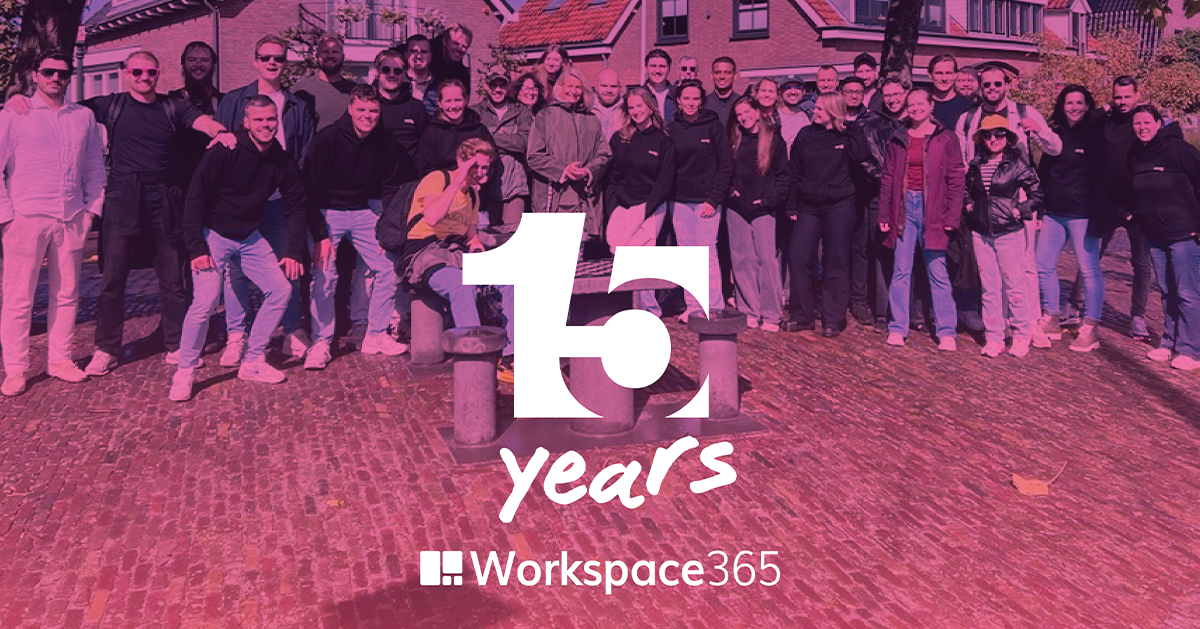Single Sign-On, also known as SSO, is essential for any digital workspace. It supports more robust security, ensures a much better and less fragmented user experience, and makes your portfolio of enterprise applications easier to manage. Basically, SSO is a no-brainer, establishing simplicity and security. In this article, we’re going to explore what Single Sign-On is as well as its various benefits, and illustrate the power of SSO by showing how it works in Workspace 365.
What is Single Sign-On?
Single Sign-On is a service that allows users to log in to multiple independent applications while only having to remember one username and password, meaning they only have to enter their details once. They do not then need to repeat them, thus gaining access to all the different applications they need to use until they sign out.
Typically, SSO is applied so that when an employee logs in to a company network, they can then effortlessly access all the different digital workplace applications they need during the working day.
From a technical perspective, there are other common authentication schemes which provide an SSO-like experience, but are not necessarily Single Sign-On in the purest sense. However, when most employees think of SSO, they refer to the general ability to log in to all software at once.
If you want to explore how SSO works in more detail, we have written an article addressing which Single Sign-On methods offer access to applications.
What are the benefits of Single Sign-On?
These are the top 7 benefits associated with Single Sign-On:
- Improved digital employee experience
- Saving time and raising productivity
- Better adoption of applications
- Easier rollout of new applications
- Safe SSO with more robust digital workplace security
- Reduce pressure on your IT helpdesk for the overall digital workplace
- Support for a single, integrated digital workspace
1. Improved employee experience
The most obvious benefit of SSO is that it makes life much easier for employees when they do not have to enter multiple different usernames and passwords across each application they use every day.
There is nothing more frustrating than having to enter your details over and over again and interrupt your flow of work, or having to go through an annoying password reminder process because you’ve forgotten what it was. It’s also a big ask to get every employee to remember so many different log-in details. The simplicity of SSO makes using applications in your digital workspace effortless and seamless, leading to a far less fragmented user experience and happier employees!
2. Saving time and raising productivity
As well as reducing frustration, Single Sign-On is also highly efficient, saving employees time and raising productivity. Estimates suggest that SSO saves a staggering 24 hours per employee per year, avoiding the wasted time associated with entering credentials or trying to find passwords. Across an entire workforce, the impact is enormous.
3. Better adoption of applications
Single Sign-On supports better adoption of different applications right across your digital workspace. SSO removes all the barriers associated with authenticating into the different tools that employees need. The positive impact on supporting better adoption should not be underestimated; an employee with very little spare time in their working day is far less likely to use an application if they have to remember a new username or password or go through some kind of log-in set-up process every time.
4. Easier roll-out of new applications
SSO helps IT functions and digital teams to roll out new applications to employees. For tools that are being launched, first impressions are important, so seamless authentication for users is a must. The reduced associated effort makes it far easier to get employees to try a new application and also keeps pressure off busy IT helpdesks so they can focus on higher value activities.
5. Safe SSO with more robust digital workplace security
Single Sign-On provides a robust approach to digital workspace security. One of the key challenges of managing digital tools is ensuring that when a person leaves an organisation, they no longer have access to the company’s applications. This process gets very complex with multiple applications in play, and mistakes can be made.
Single Sign-On reduces risks associated with leavers, because when their ID is no longer valid across the network, it should mean they can no longer access individual systems.
SSO also reduces risks associated with poor password management, such as easy-to-guess formats or the same passwords used across multiple applications where one of those applications could get hacked. Because employees can use strong passwords for all applications without the concern that they won’t be able to remember them, seen as they can access them anyway through their Single Sign-On portal.
Of course, you can also apply multi-factor authentication to SSO, such as a one-time passcode sent to a mobile device, to help ensure robust security is in place.
6. Reduce pressure on your IT helpdesk for the overall digital workplace
It does the heavy lifting around user management, with easier onboarding and offboarding of starters and leavers, and the ability to support easier password changes from users.
It takes the pressure off your IT helpdesk by reducing the queries you get by having individual IDs for each application. SSO also means less change management effort is required when introducing new applications, as users should be able to access a new tool seamlessly and with minimal effort.
7. Support for a single, integrated digital workspace
Single Sign-On underpins having a single, integrated digital workspace such as Workspace 365 where employees can access everything they need for the working day quickly, seamlessly and in one place. Ensuring employees do not have to reauthenticate once they are within the digital workspace environment is essential to successfully delivering this experience and all the benefits that flow from it.
What tools are available within the SSO environment?
The ability to integrate a huge range of tools and apps within Workspace 365 is a great illustration of the power of Single Sign-On. With Workspace 365, SSO can be based on different SSO providers; we’ve illustrated three key ones here, but others include NETIQ, HelloID and SecureLogin.
Single Sign-On using Microsoft Azure
Organisations with a Microsoft-driven digital workplace can base their SSO on Azure Active Directory (AAD). The users within the AAD are synchronized to Workspace 365.
After configuring applications for single sign-on in Azure, they are available in your Microsoft ‘My Apps’ portal. However, this gives employees yet another portal. That is why you can integrate those applications, with SSO, within Workspace 365.
By doing this people see applications and information that is relevant to them, and they can access more with a single click. The Azure Marketplace offers out of the box single sign-on to over 4,000 applications.
Single Sign-On using Okta
Okta is a popular Identity-as-a-Service provider often used to establish SSO for a range of cloud applications, particularly when there are a number of disparate applications being used. Again, you can use Okta with Workspace 365.
Single Sign on to Citrix Virtual Applications and Desktops
Many organisations use Citrix for virtual applications and desktops, and some will continue to need doing so for a part of their workforce.
With Workspace 365, you can access Citrix virtual apps with a single click and without installing a receiver. Additionally, you can also offer a switch to allow people to use the Citrix receiver if it is available on their device. This is very useful for users who may want to switch between a virtual desktop and their digital workspace without losing access to the tools that they need.
Single Sign-On is critical, combine it with MFA
It’s worth noting that with Workspace 365, it is easy to apply multi-factor authentication to your digital workspace to ensure it meets the information security policies of your IT department. This is important as people will be able to open any application with a single click, saving hours of frustrations and time-loss spend on lost passwords.
Single Sign-On is critical for your digital workspace. Users love it for its simplicity, and IT teams love it for its security. We’ve ensured there is excellent support for SSO in Workspace 365.







